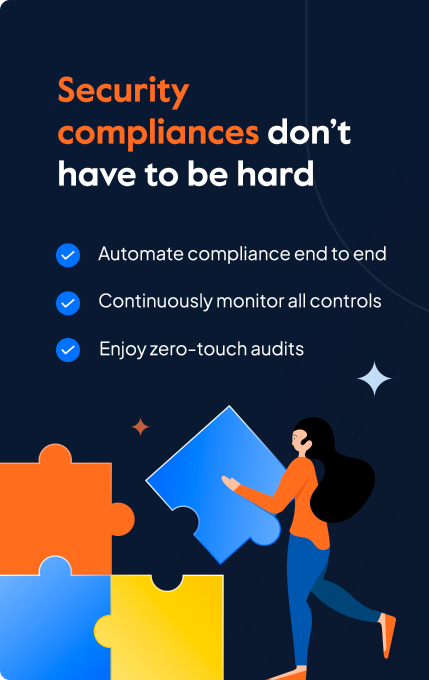Sprinto’s Vendor Management Policy Template
A vendor management policy provides a structured approach to managing vendor relationships while ensuring compliance and mitigating third-party risks.

What is a vendor management policy template?
A vendor management policy is a template designed to identify risks stemming from vendor relationships and ensure these risks are managed or eliminated. The policy defines and ensures security controls are implemented to enable compliance and reduce the organization’s third-party risk surface.
Why do you need this template?
A vendor management policy template is essential because it provides a structured approach to managing relationships with third-party vendors. It ensures that risks are mitigated and services align with business objectives. It is a practical guide that can be molded to suit your organization’s needs.

Vendor evaluation criteria
Outlines criteria for selecting and evaluating vendors, ensuring they align with organizational goals.

Transparency
Details how vendors will be onboarded and how communication will be managed and encourages clear and open interactions.

Risk mitigation
Addresses risk assessment and mitigation strategies to protect the organization from potential disruptions or financial losses.

Performance monitoring
Includes guidelines for monitoring vendor performance and setting key performance indicators (KPIs).

Communication and collaboration
Defines how the organization communicates and collaborates with vendors, ensuring effective partnerships.
How do you use the vendor management policy template?

Design and customize
Customize this template according to your business context and security requirements. Be forward-thinking when applying its scope to your business.

Test your template
Validate the steps included in this template for accuracy. Test the policy template and make changes to ensure proximity to the business context.

Acquaint your workforce
Educate your workforce on the scope of the policy, their roles and responsibilities within the function it covers, and how to use it effectively.

Make improvements
Review your policy regularly (ideally once every 6 to 12 months) to ensure it is up to date and aligned with industry requirements.

Leverage automation
Roll out policies, schedule security and policy training, and gain completion acknowledgments within a single interface to ensure 100% adherence.
Vendor Management Policy Template
Get started with this template right now. It’s free



